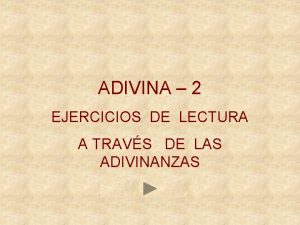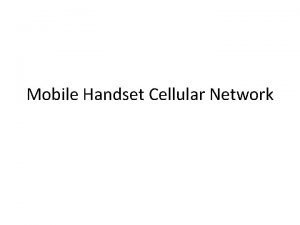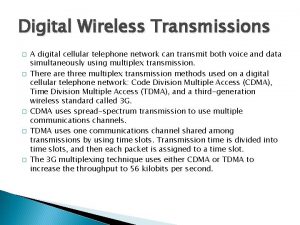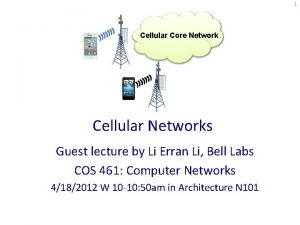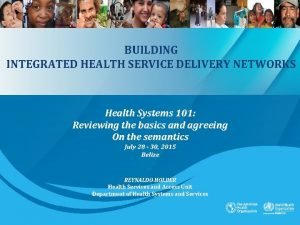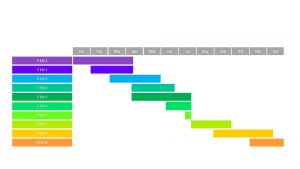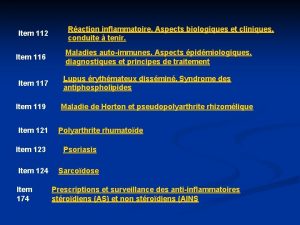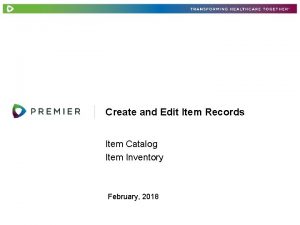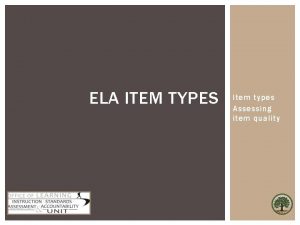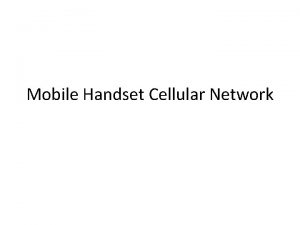ALTO Recharter Item ALTO Cellular Network Information Service












- Slides: 12

ALTO Re-charter Item: ALTO Cellular Network Information Service Chunshan Xiong, Gang Li, Richard, Yannis Zhang IETF 109, Virtual Event Nov. 19, 2020

Proposed Paragraph Extensions of ALTO to provide cellular network information to applications. Increasingly more applications use cellular networks to support mobile devices (user equipment, UE), and recent evaluations have demonstrated that information about cellular networks such as base station status and link status can improve application performance such as Qo. E. The working group will investigate extensions of basic ALTO information services to expose to mobile clients/applications about cellular network information on links between the UE and the network (e. g. throughput, delay, jitter ) via obtaining general base station network information (e. g. CQI, SINR, MCS, RSRP/RSRQ). The extensions should clearly address dynamicity issues and security issues including authentication, authorization, and confidentiality about UE and network information. The working group will first define clearly its scope, in particular regarding its coordination with key SDOs including 3 GPP defining related efforts such as NEF (network exposure function).

Details: Problem • Issue 1: Whether it is feasible to obtain the cellular information? • Issue 2: How does ALTO server obtain cellular information from 5 G NEF? • Issue 3:What cellular information is from ALTO server to ALTO client? • Issue 4:What cellular information is exposed from 5 G network to ALTO server?

Details: A Potential Solution for Issue#1 (Whether it is feasible to obtain the cellular information) • It is feasible to obtain the cellular information from NEF • Reuse the CAPIF defined in 3 GPP • Leverage the release-17 Edge computing Enhance to provide cellular network information with low-latency. OOB N. I. ALTO Server 5 G Control Plane UE & APP 5 G Network Exposure Function The Common API Framework (CAPIF) IB N. I. g. NB 5 G Network ALTO Proxy ALTO Client UPF 5 G R 17 EC Exposure Function

Details: A Potential Solution for Issue#2 (How does ALTO server obtain cellular information from 5 G NEF) • For OB solution, it is proposed that the ALTO server reuses current standard to obtain the cellular information via NEF northbound interface. • For IB, it is proposed to investigate the potential solution and leverage the existing standardization outputs. • • TCP Header/IP Header ICMP ECN RTCP ALTO Server

Details: A Potential Solution for Issue#3 (What cellular information is from ALTO server to ALTO client) • Measurement information: bandwidth, latency, jitter • Predicted information: available bandwidth for next a few seconds

Details: A Potential Solution for Issue#4 (What cellular information is exposed from 5 G network to ALTO server? ) • Radio channel status: e. g. SINR, RSRP/RSRQ, CQI, MCS • L 2 user plane measurements: e. g. throughput, latency • In addition, different levels can also be considered, i. e. flow, UE, slice, serving cell and neighboring cell. For those information defined but not exposed from 5 G network, we can send LS to 3 GPP to ask for such information exposure.

Details: Key Remaining Issues • Security/sensitivity of info • It is not sensitive for OB solution and • for future study for IB. • For OB+IB solution defined in 3 GPP EC in Rel-17, it is treated as OB solution for IETF ALTO. • Given 3 GPP/layer 2 SDO are defining this interface/service, why do we need ALTO to do it as well? Why Internet standard, and 3 GPP standards are not enough? • GPP NEF provides low layer information, which is hard for application usage directly. • ALTO server can aggregate such original cellular information, and have capability and possibility to process that information and provide it to applications (ALTO client) with more easy to use via a single interface. • Is the info really useful? • The results from IETF MOWIE draft paper can prove the benefit of utilizing such cellular information. - • Are the providers willing to provide the info? • It depends on business model. On one hand, operators can increase revenue by charging from OTT vendors. On the other hand, it is helpful to improve user Qo. E and increase user loyalty. • Is the info from a single device or a set of devices, where the devices involved can span multiple autonomous domains, multiple wireless links may get involved? What does mean for this context? • For local breakout scenario, the NEF and radio network are within the same operator, no problem to get information. • For home domain routed scenario, the NEF and radio network belongs to different operators, but since the home routed traffic, there is a roaming agreement for multiple domains and NEF can provide some cellular network information.

Details: Who Will Work on It • Chunshan Xiong, Tencent • Gang Li, China Mobile • Richard Yang, Yale University • Yannis Zhang, Tencent • Young Lee, Samsung • …

Details: Potential Milestones (1 -2 years) • Mar. 2021 (IETF 110): Problem Description on support cellular network • Nov. 2021 (IETF 112): Extend ALTO Information Service with Cellular network information and its information freshness • July 2022 (IETF 114): Best Practice to provide deployment guideline for network information exposure

Benefits of cellular information exposure • Use case 1: ABR for Cloud gaming • Exposing radio channel status, e. g. MCS, to derive predicted bandwidth for adaptive bitrates of cloud gaming • Lagging ratio (MTP>200 ms) is significantly reduced from 63% (a constant bit rate of 7. 5 Mbps ) to 19% (average bit rate of 6. 7 Mbps) • Use case 2: TCP Performance optimization • Available UE radio bandwidth and Available UE buffer size for TCP sending window adjustment every 100 ms • Under the good and medium coverage, the throughput is significantly improved by more than 50% More info refer to: Mo. WIE: Toward Systematic, Adaptive Network Information Exposure as an Enabling Technique for Cloud-Based Applications over 5 G and Beyond, SIGCOMM '20: Annual conference of the ACM Special Interest Group on Data Communication on the applications, technologies, architectures, and protocols for computer communication. ACM, 2020.

Related References • https: //datatracker. ietf. org/doc/draft-huang-alto-mowie-for-network -aware-app/
 Hablo y no pienso lloro y no siento río sin razón
Hablo y no pienso lloro y no siento río sin razón Metafora
Metafora Cellular network range
Cellular network range A satellite used in a cellular telephone network
A satellite used in a cellular telephone network Cellular core network
Cellular core network Palo alto networks certified network security engineer
Palo alto networks certified network security engineer Difference between datagram and virtual circuit
Difference between datagram and virtual circuit Types of network topology
Types of network topology Features of peer to peer network and client server network
Features of peer to peer network and client server network Ece 526
Ece 526 Network centric computing and network centric content
Network centric computing and network centric content Circuit switched vs packet switched
Circuit switched vs packet switched Health service delivery network
Health service delivery network
